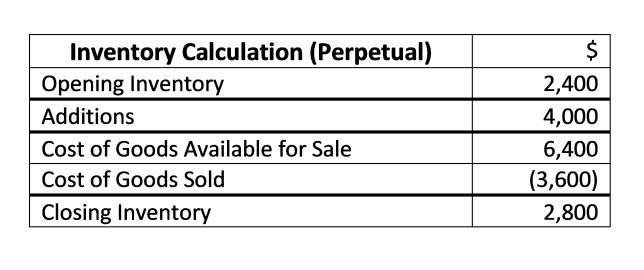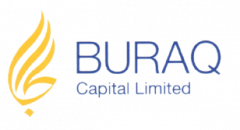
Businesses must ensure compliance with tax regulations and consult with tax professionals to understand the implications fully. Reversing a write-off requires time and effort, so think carefully before reversing a decision. It can also have tax implications, so consult your accountant to determine the best course of action. Reversing a write-off can be complicated and require significant effort, especially if the original bad debt was incorrectly identified. Bad debt represents an expense and potential waste of resources for a company.
- If most of your customers pay on time and you only have just a few bad apples, this method might be sufficient.
- Suppose ABC predicts that out of $100,000 total accounts receivable, $20,000 is uncollectible.
- That is, costs related to the production of revenue are reported during the same time period as the related revenue (i.e., “matched”).
- To better grasp the distinction between the allowance method and the direct write-off method, it’s helpful to compare them across several key aspects.
Direct Write-Off Method Versus the Allowance Method
The allowance method accounts for the bad debt of an unpaid invoice in the same time period as the invoice that was raised. When a company uses the allowance method, they have to study its accounts receivable or unpaid invoices and estimate the amount that may eventually become bad debts. It is credited to an allowance for doubtful accounts which is a contra account. As stated previously, the amount of bad debt under the allowance method is based on either a percentage of sales or a percentage of accounts receivable.

Direct Write-Off Method vs the Allowance Method for Bad Debt
- Under the percentage of sales basis, the company calculates bad debt expense by estimating how much sales revenue during the year will be uncollectible.
- As a result, financial statements prepared using this method may not provide a fair and accurate representation of a company’s financial health.
- Once ABC discovers that the client is not going to pay, they will use the balance in the allowance for doubtful accounts to write off the bad debt.
- It is also commonly used for tax reporting purposes under IRS rules in the United States.
- Allowance for Doubtful Accounts is a contra-asset linked to Accounts Receivable.
- The direct write-off method is the simplest method to book and record the loss on account of uncollectible receivables, but it is not according to the accounting principles.
- An estimate of bad debt is made at the end of the accounting period based on historical customer data.
If the customer paid the bill on September 17, we would reverse the entry from April 7 and then record the payment of the receivable. We must create a holding account to hold the allowance so that when a customer is deemed uncollectible, we can use up part of that allowance to reduce accounts receivable. Allowance for Doubtful Accounts is a contra-asset linked to Accounts Receivable. The allowance is used the reduce the net amount of receivables that are due while leaving all the customer balances intact. It seems counterintuitive to restore the balance to pay it off, but for recordkeeping purposes, it is necessary to restore the account balance and show the customer properly paid his debt. We must make sure to show that Joe Smith paid the amount he owed, not just the fact that the company received some cash.
BAR CPA Practice Questions: Budgetary Comparison Reporting
This is Outsource Invoicing considered an expense because bad debt is a cost of doing business. Part of the cost of allowing customers to borrow money, which is essentially what a customer is doing when the business allows the customer time to pay, is the expense related to uncollectible receivables. However, the direct write-off method must be used for U.S. income tax reporting.
Businesses can only take a bad debt tax deduction in certain situations, usually using what’s called the “charge-off method.” Read more in IRS Publication 535, Business Expenses. Let us understand the journal entries passed during direct write-off method accounting. This shall give us a deeper the direct write-off method is used when understanding of the process and its intricacies. If most of your customers pay on time and you only have just a few bad apples, this method might be sufficient.

Calculate bad debt expense allowance method
The direct write off method is a way businesses account for debt can’t be collected from clients, where the Bad Debts Expense account is debited and Accounts Receivable is credited. An accounting firm prepares a company’s financial statements as per the laws in force and hands over the Financial Statements to its directors in return for a Remuneration of $ 5,000. The firm is taking regular follow-ups with the Company’s directors, to which the directors are not responding.

Direct Write-Off Method Vs. Allowance Method

Leveraging technology and investing in staff training further enhances these efforts. Balancing credit risk with sales growth and maintaining positive customer relationships ensures long-term business success. Strengthening communication with customers experiencing financial difficulties helps build trust and may uncover collaborative solutions. Additionally, temporarily tightening credit limits or shortening payment terms can provide an extra layer of protection. By adapting credit management strategies to reflect the prevailing economic climate, businesses can better mitigate risk and enhance operational resilience.
What is the Journal Entry for Direct Write-off Method When a Customer Pays a Bad Debt?
It represents the amount that is required to be in the allowance of doubtful accounts. However, if there is already a credit balance existing in the allowance of doubtful accounts, then we only need to adjust it. Understanding the account’s financial impact will help you make better business decisions. Bad debt accounting can become incredibly complex and might introduce errors into your bookkeeping process. Use the following best practices to manage and record uncollectible accounts correctly.
Reporting Bad Debts
The accounting team credits the accounts receivable account with the total value of what customers owe. This can make it seem as if the company has more accounts receivable or cash in hand than it actually does. Bad debt is predicted and recognized on the books in the same time period as related sales and is written off using a contra-asset account called ‘allowance for doubtful accounts’. Once ABC discovers that the client is not going to pay, they will use the balance in the allowance for QuickBooks doubtful accounts to write off the bad debt.
